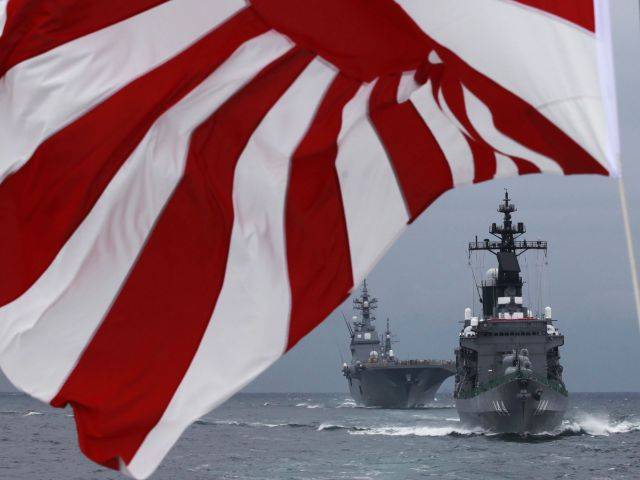By Ralph Jennings

Japanese Prime Minister Shinzo Abe delivers a speech during the graduation ceremony of the National Defense Academy in Yokosuka, Kanagawa prefecture on March 19, 2017.
Japan has lived by a peacetime constitution since 1947, two years after its World War II surrender. The constitution obligates it to groom armed forces only for defense, no first strikes on another country.
Japan has done just about everything but add outright offensive forces to vie with China as Asia’s chief superpower.
Its military ranks No. 7 in the world, four notches below China, the statistical data base Global FirePower.com says.
They would probably do all right in battle: Japan has been known throughout history for rigorous training of soldiers to defend the island nation from Russia even before World War II, according to this historical take.
The country also has a 66-year-old military treaty with the United States, obligating it to give U.S. troops a staging ground for any action in East Asia, in return for getting help in any new war from the world’s most powerful armed forces.
Three years ago the government recast the way it sees Constitution Article 9 – which renounces war – so Japan could defend not only itself but its allies if needed.
Three years ago the government recast the way it sees Constitution Article 9 – which renounces war – so Japan could defend not only itself but its allies if needed.
Prime Minister Shinzo Abe says Article 9 needs an update for his people’s protection.
Abe means protection from China, you could securely say.
Abe means protection from China, you could securely say.
China is the chief reason Japan hopes to build toward regional superpower status.
North Korea is threatening Japan with missiles, four of which it fired into a shared sea earlier this month, and China supports the Kim Jong-un regime in Pyongyang.
China sends military aircraft near Japanese outlying islands and Japan's uninhabited Senkaku archipelago.
Last year China also passed ships near the Senkaku chain over more than 30 days last year.
That means Japan needs to scramble its own planes whenever the Chinese approach.
These incidents normally raise voices in Japan for a stronger military.
Japan needled China last week with word it would send a ship into its own oceanic backyard.
These incidents normally raise voices in Japan for a stronger military.
Japan needled China last week with word it would send a ship into its own oceanic backyard.
It would send its Izumo helicopter carrier into the Beijing-dominated South China Sea from May through August for port calls, on its way to the Indian Ocean for drills with the United States.
A Chinese foreign ministry spokesperson told Japan to “refrain from causing trouble in the region,” Beijing’s official Xinhua News Agency says.
The two countries are vying to be the chief economic superpower in Asia, as well.
The two countries are vying to be the chief economic superpower in Asia, as well.
That's particularly obvious in the Association of Southeast Asian Nations (ASEAN), a bloc of 10 countries and about 600 million people.
Chinese aid is hard to quantify but included $20 billion in loans in 2014 and a late 2015 pledge of $10 billion for infrastructure lending.
Programs such as its “Maritime Silk Road” and the Beijing-based Asian Infrastructure Investment Bank pave way for that funding.
Japan has donated development aid since the 1950s and announced an increase last year to Southeast Asia.
China is keen to use the region’s natural resources, while Japan sees Southeast Asia as a site for low-cost factories.
Japanese investment in the region rose three times to $181 billion from 2011 to mid-2016.
Both countries hope to sell to Southeast Asian consumers.
And both want ASEAN governments to be long-term allies in their quest for control in Asia, a reason Japanese aid to Vietnam includes patrol boats.
“For many decades, Japan has played an important role in providing development and humanitarian aid to countries throughout East and Southeast Asia, but it was long ‘hindered,’ so to speak, by its pacifist defense policy,” says Jonathan Spangler, director of the South China Sea Think Tank in Taipei.
“For many decades, Japan has played an important role in providing development and humanitarian aid to countries throughout East and Southeast Asia, but it was long ‘hindered,’ so to speak, by its pacifist defense policy,” says Jonathan Spangler, director of the South China Sea Think Tank in Taipei.
“It can now become more directly engaged in regional securitization efforts. This is reassuring.”


Aucun commentaire:
Enregistrer un commentaire